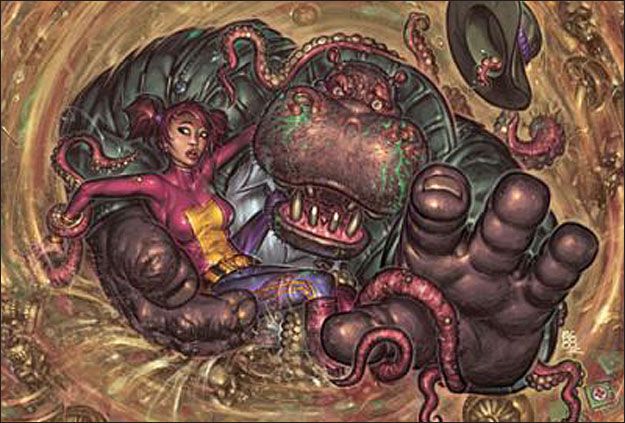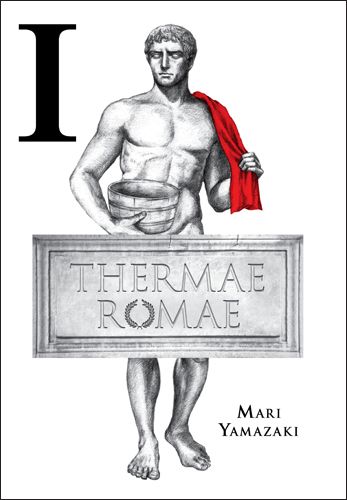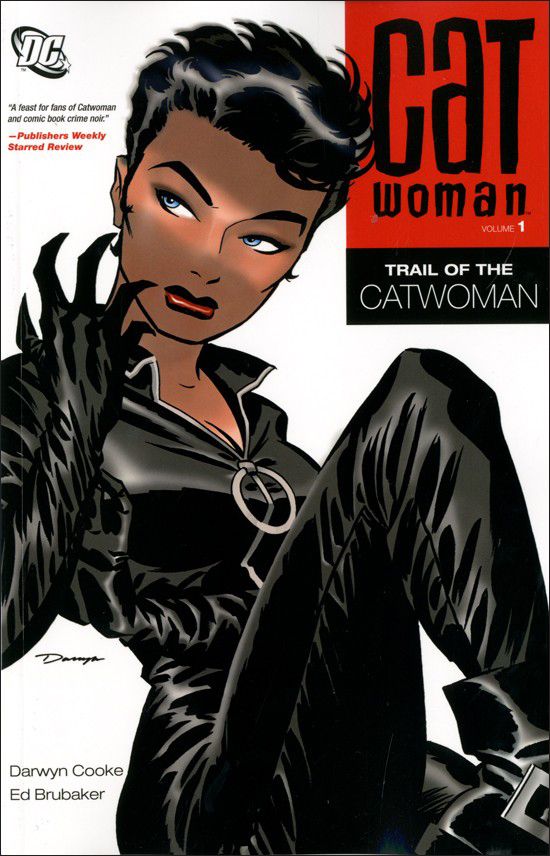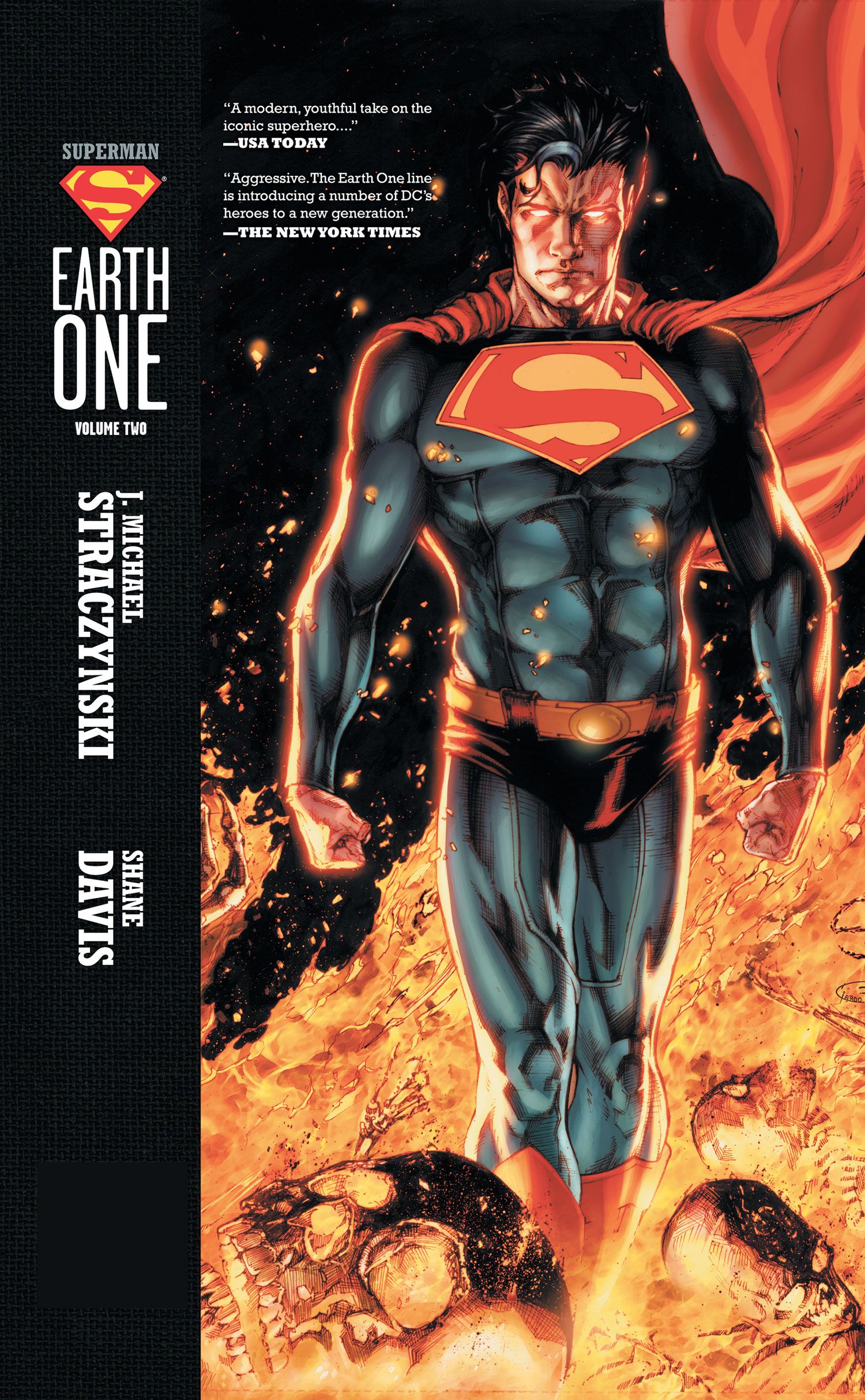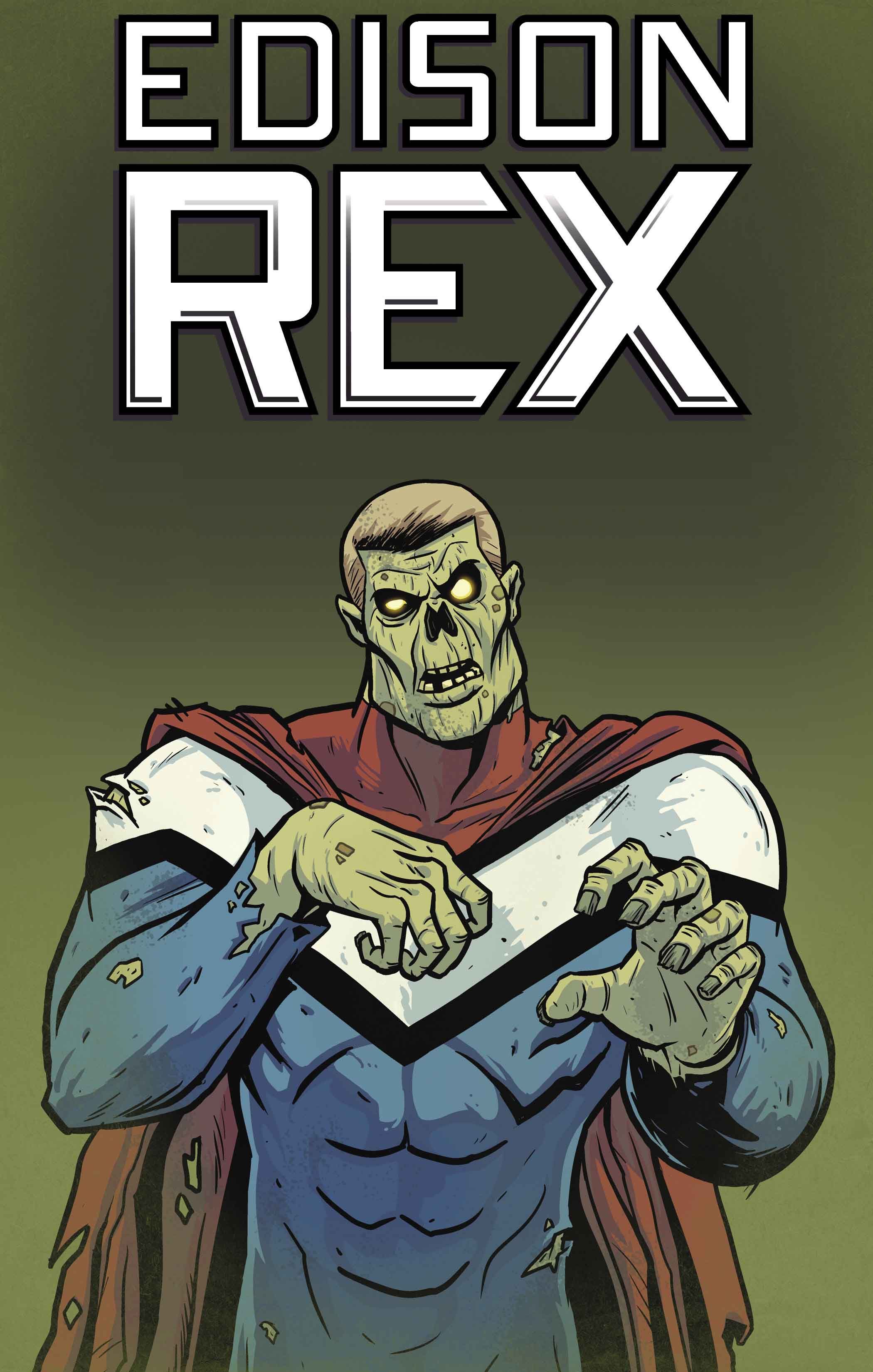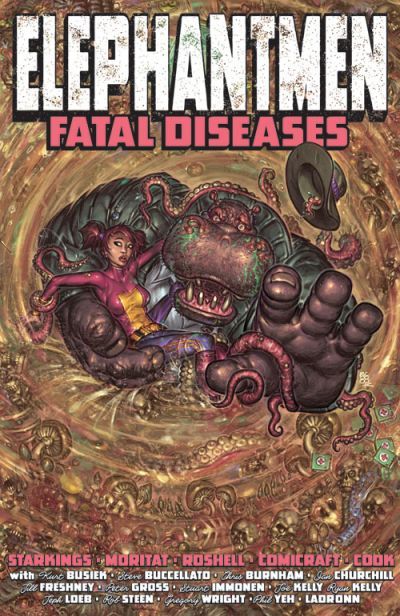Welcome to What Are You Reading?, our weekly look at the comics, books and other things we’ve been perusing of late. Our guest today is Tyler James (@tylerjamescomic), the publisher of ComixTribe, which is both an online resources for comic creators and a new creator-owned imprint. Tyler is also the writer of the superhero murder mystery The Red Ten, which goes on sale Dec. 19, and the organizer of the annual 30 Characters Challenge, in which writers and artists attempt to create 30 characters in just 30 days, one for every day in November (it's under way now at 30characters.com).
Here's what Tyler and the Robot 6 crew are reading this week:
Brigid Alverson
I was looking forward to reading the latest incarnation of The Shadow, by Garth Ennis and Aaron Campbell. I haven’t read any of the earlier Shadow comics, but I thought the character would be interesting and it would be a nice period piece. Wrong on both counts. The story is simpleminded and gratuitously violent, and the character lacks dimension or subtlety. It’s your basic war story of a bunch of people trying to find some substance of strategic interest (uranium, I’m guessing) and double-crossing each other along the way, but there's not much mystery to it, just a bunch of people getting shot in the face. The main character is kind of a jerk, which can be OK in a comic, but he's not a likeable jerk, and in fact, there isn't a single likeable character in the entire comic. Campbell's art is generic to the extreme — the story could be taking place at any time, and the men all look alike (there are only two women, and one is a Nazi). Perhaps things get better by the end, but I wouldn't know, because reading this just felt like work, so I quit.
Thermae Romae, on the other hand, is sheer delight. Published by Yen Press in a deluxe hardcover format, it's a manga like no other you have ever seen. The lead character is a designer of baths in ancient Rome who keeps getting sucked through some kind of a vortex to modern-day Japan, where he observes customs and technology he had never imagined before. When he inevitably gets sucked back to Rome he recreates them in his own way. The manga is drawn in a style that evokes 19th-century illustrations of ancient Rome, and the glimpses into the everyday life of both the Romans and the Japanese are fascinating — I have never seen bathrooms drawn in such loving detail. Plus it's funny.
Tom Bondurant
This week I read most of the recent Trail of the Catwoman collection, which reprints a lot of the Ed Brubaker/Darwyn Cooke stories. This includes the Selina's Big Score graphic novel (which was all Cooke), the Slam Bradley backups from Detective Comics, and the first four issues of their Catwoman series (inked by Mike Allred). I had read much of this before, of course, but this was the first time I took it all in as a collection. Selina's Big Score really sets the tone well, establishing Selina as a talented criminal in her own right, apart from her dealings with super-people. Although it's very much PG-13, and there's the occasional reference to Batman, it's in the same vein as Cooke's Parker adaptations. It incorporates Selina's history from "Batman: Year One" (and I think from Mindy Newell and J.J. Birch's 1988 Catwoman miniseries), but spins those elements for its own purposes. Accordingly, for me the trickier task is putting Selina back in the costume in a way which doesn't invalidate those noir trappings. Fortunately, Brubaker and Cooke make that work, too, bringing Batman into the mix gradually (through Bradley's investigation into Selina's "death") and then having him work around the margins once Selina's active again. This is a pretty delicate balance -- Selina gets a more practical costume, but ends up facing a super-powered foe -- but ultimately, Selina's revived career as a vigilante (and sometimes thief) comes out of the recognition that she's better-suited to help those Batman can't. That leaves her less dependent on Batman while still grounding her in the larger Gotham City setting, which, again, is a pretty nifty feat.
I've also been leafing through Bob Greenberger's Star Trek: The Unauthorized History, a sort of overview/scrapbook of the various series and movies told from more of a fan's perspective. Greenberger was a longtime editor (and sometimes writer) of DC's Star Trek comics, and wrote a few Trek novels, so his credentials are pretty solid. Cleverly, he peppers the book both with photos of action figures, fanzines, comics, and various other Trek memorabilia, in addition to the usual shots of actors and producers. It's a more playful approach, although the dedicated Trekker may not find much new information here. Personally, I liked seeing the captain of the Navy's Enterprise aircraft carrier dressed in a Wrath of Khan-style uniform, and I was amazed to see that Continuity Studios got Sulu and Uhura completely wrong when they did those book-and-record comics. Now I have to track down that Seven of Nine figure I somehow missed.
Finally, given all the dire warnings Dan Slott sounded about not spoiling it, I was expecting something more apocalyptic from the end of The Amazing Spider-Man #697 (co-written by Christos N. Gage, penciled by Giuseppe Camuncoli, inked by Green & Bell). I liked the issue well enough, but in hindsight it reads like Slott had to wrap up the current arc on the double so he could get to the big Doc Ock story in issues 698-700. While there's some exciting Spidey-versus-Hobgoblins action, and a good use of Peter's boss Max (not to mention Peter's cellphone), there's also some hand-waving towards the end. Still, I did appreciate the joke/parody on the last page. It's the kind of thing which would go well in House to Astonish's Official Handbook of the Official Handbook of the Marvel Universe.
Chris Mautner
Superman: Earth One, Volume Two by J. Michael Straczynski and Shane Davis: This is just really, really horrible. Awful in just about every aspect, but rather than rant at length about its many crimes, it did bring to mind one peeve I have regarding Superman, which is: Why is it no one who writes Superman can create a credible newsroom? Is it really that hard to imagine what it might be like to be a reporter. As someone who actually is a reporter and who has worked in the media for many years, I find it amazing that most people writing Superman comics seem to not have the faintest clue about what goes on in a newsroom or how the staff interacts with each other. It's not like it's some big mystery. It's especially egregious in this book, where ... but there I go, almost talking about a book that really deserves as little press as possible. Just avoid the thing -- trust me, you'll be better off.
Angelman by Nicholas Mahler: I've really enjoyed Mahler's work up till now -- his minimalist, squat characters and deadpan humor have never failed to charm me. But this parody of modern superhero comics honestly left me cold. It's about a hapless hero, dreamed up by corporate overlords, that goes through endless revamps and alterations but never manages to become a hit with the fans. Mahler obviously knows his stuff -- there are lots of jokes about variant covers and film adaptations and pandering violence and the like, but the problem is this is well-worn territory, and Mahler ultimately isn't making fun of anything that hasn't been made fun of a million times before. And the jokes here just aren't inspired enough to make the book seem anything more than overly familiar.
Tim O'Shea
Thursday in the United States is Thanksgiving, and then the holy gates of hell in terms of retail are going to open up. While reading Issue 4 of Edison Rex, I was reminded that November is the month that Monkeybrain is donating part of its profits to Hero Initiative. I’ll be honest, even if the Monkeybrain crew did not feature some of my favorite creators (Colleen Coover, Paul Tobin, Chris Roberson, Kurt Busiek and Steve Leiber — among many others) I would be encouraging folks to support Monkeybrain this month in particular.
In the case of Edison Rex, however, I can heartily endorse the series — jump on board (for 99 cents per issue, for the love of God). It’s like getting a taste of Roberson’s Superman run, but without corporate editorial interference, but getting the added bonus of Roberson’s humor. This issue, we are introduced to Defiant (a golem variation of the late hero Valiant, who seems one part homage to Bizarro/one-part Solomon Grundy). As much as I enjoy Roberson’s writing, he could not make this story sing as well as it does with Dennis Culver’s solid artistic skills. Prior to this issue I had failed to appreciate Culver’s ability to do some great subtle facial reactions. Back to the aforementioned comedy element, this issue also features another installment of the "Secret Files of Edison Rex" (a portion devoted to character bios/location specs), which includes the great line “Limitations: Defiant is as dumb as a rock.” Also, while this issue was released prior to the reported demise of the Hostess brand, it proved unintentionally timely by including a one-page homage to the Hostess ads of the 1970s (in the Edison Rex universe, the Hostess equivalent is Moistest [complete with a logo where the dot in the I is a heart). Edison Rex is full of little touches like that, be they written or visual. (Back to my initial point, though, so if you are looking to spend some money post-Thanksgiving, please consider buying Monkeybrain this month to support Hero Initiative -- or just be sure to support Hero Initiative if I have not convinced you to buy Edison Rex).
While I have praised the past two issues of The Creep, by writer John Arcudi and artist Jonathan Case (the latter of whom aptly described the series as “wrenching neo-noir”), with the release of Issue 3, I want to pay particular attention to Case’s coloring on the project. Most of the issue takes place in snow-covered woods. As a result, the tones that Case uses in most of the book actually allows the color in a dream sequence as well as a flashback scene to be even more jarring and effective. I do not know if Case normally colors himself — and maybe to veteran colorists his work may not seem as strong, but to my mainstream (admittedly unprofessional) eye, I think his coloring is dynamic and another reason to enjoy the series.
Tyler James
Elephantmen: I'm still working through the first four oversized volumes of Elephantmen, which I picked up from Richard Starkings himself at a convention a while back. But, man, what an underrated gem this Image Comics series is! Elephantmen is a sprawling epic story of a future where human/animal hybrids were used as weapons of war by a ruthless corporation ... and what happens years later when those hybrids re-assimilate into society. With this series, Starkings, Moritat and an incredible collection of artists have put together a master class on world-building in comics. The Elephantmen covers are some of the best in comics in the last decade, and the sheer craft that goes into these books from beginning to end is remarkable. I don't just read this series ... as a creator, I study it.
Creator Owned Heroes: I really like what Steve Niles, Jimmy Palmiotti and Justin Gray are doing with Creator Owned Heroes. One part comic book (with each issue containing two serials from Niles and the Palmiotti/Gray team), one part magazine (with comics how-to columns, interviews, pictorials and whatever the hell else they want to throw in), COH is good value for your comic dollar. I'm glad this book exists, and I really hope it lasts a good long time.
The Standard: Call it shameless shilling, but as I'm busy trying to get retailers across the world to give The Standard a shot, I've read and re-read this book by John Lees and Jonathan Rector way too many times ... but it's SOOO good! This is a series that up until now has only been available in the U.K. and at a few conventions, and has garnered nearly universal praise for Lees (and a Best Writer Award at the Scottish Independent Comics Awards festival this year). It will be coming out bi-monthly from ComixTribe starting in January. The Standard is the story of two different men from two different eras who share the same heroic legacy. At its heart, it's a meditation on where superhero comics started, what they've become, and optimistically what the future could hold for them ... all told within the trappings of a cool mystery. I hope people will check out this preview; if it sounds intriguing, do tell your local retailer to hold you a copy.
Quitter: And, outside of the realm of comics, I recently read Quitter: Closing the Gap Between Your Day Job & Your Dream Job by Jon Acuff. There's no question, an awful lot of people wanting to make it in comics (or any creative endeavor) deal with the frustration of "the day job." This is a great book that helps put all of that in perspective. The first chapter is titled "Don't Quit Your Day Job" and the last is "Quit Your Day Job," and everything in-between covers, in Acuff's humorous style, what you need to put in place to get from A to B. If you're reading this while you should be working ... hey, you might want to check it out.

